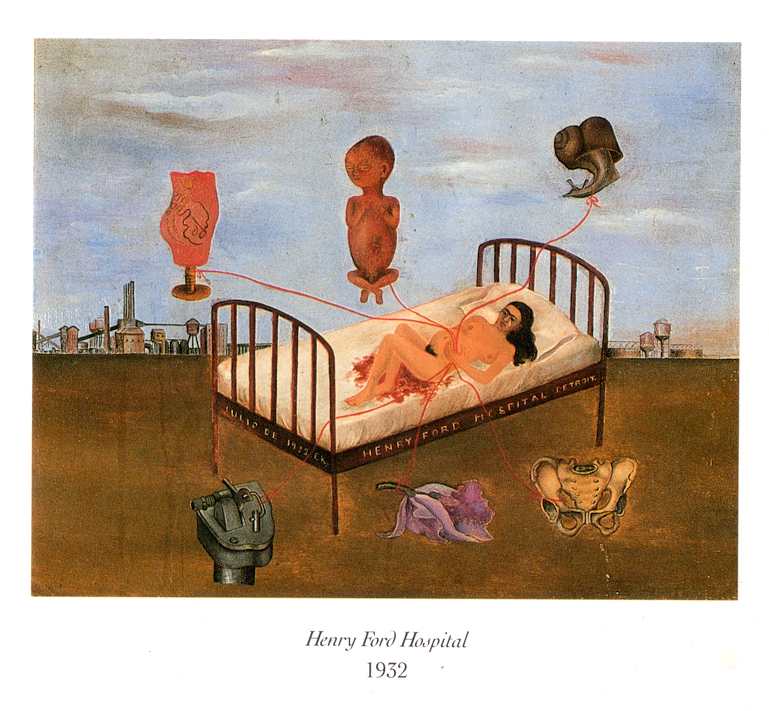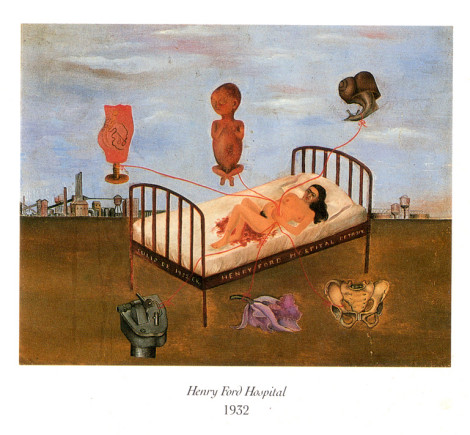I just read chapter 5: ‘The Lost Desire’: Relinquishing Maternity from Frida Kahlo by Gannet Ankori. Gannet is questioning the myth of Frida Kahlo, in particular whether she wanted to be a mother. Quoting letters to doctors and the diary of one of Diego Rivera’s assistants, Gannet suggests Frida’s questioning if she can physically carry a baby and what impact a child would have on her relationship with Diego, who doesn’t want to have children and has abandoned the children he already has, is why Frida is asking for an abortion.
I’m not convinced. I’m wondering if Frida is just scared of all the changes a child can bring, good and bad. Fearful she too maybe abandoned. Like the majority of mothers-to-be wondering how she is going to manage all of this. This type of questioning isn’t a definite indicator that Frida didn’t want to have children. If Frida was ‘ambivalent’ about having children, as Gannet says, I don’t think she would have painted such amazing paintings around the subject of miscarriage.
Henry Ford Hospital was painted just after Frida had a miscarriage in the US. It’s the first painting in which she ‘transformed from a talented portrait painter to a radically original, innovative and taboo-breaking artist.’ Gannet says. Miscarriages are rarely depicted in art, Frida invented her own visual language within surrealism.
After reading Sarah M. Lowe’s essay entitled Essay in The Dirary of Frida Kahlo: An Intimate Self-Portrait, I’m very interested in reading more about surrealism. On page 27, Sarah describes
‘The guiding principle behind the Surrealist impulse that emerged in France in 1924 was rebellion, a revolt against all conventions, and in their place, the privileging of the supernatural, the antisocial, the international, and most important, the irrational… While [Andre] Breton was inspired by what was alien to the rational world of the white European male – madness, women, the exotic – Kahlo’s creative impulse came from her own concrete reality.’

